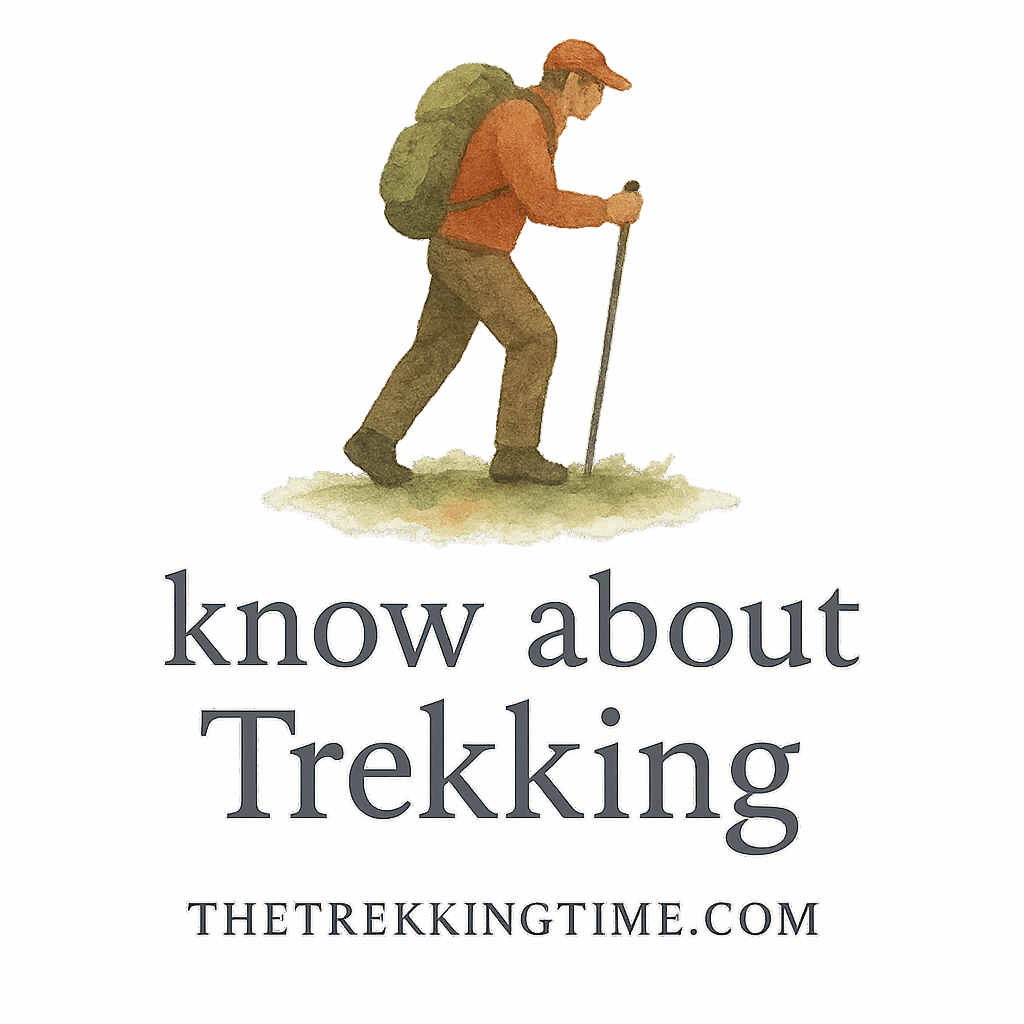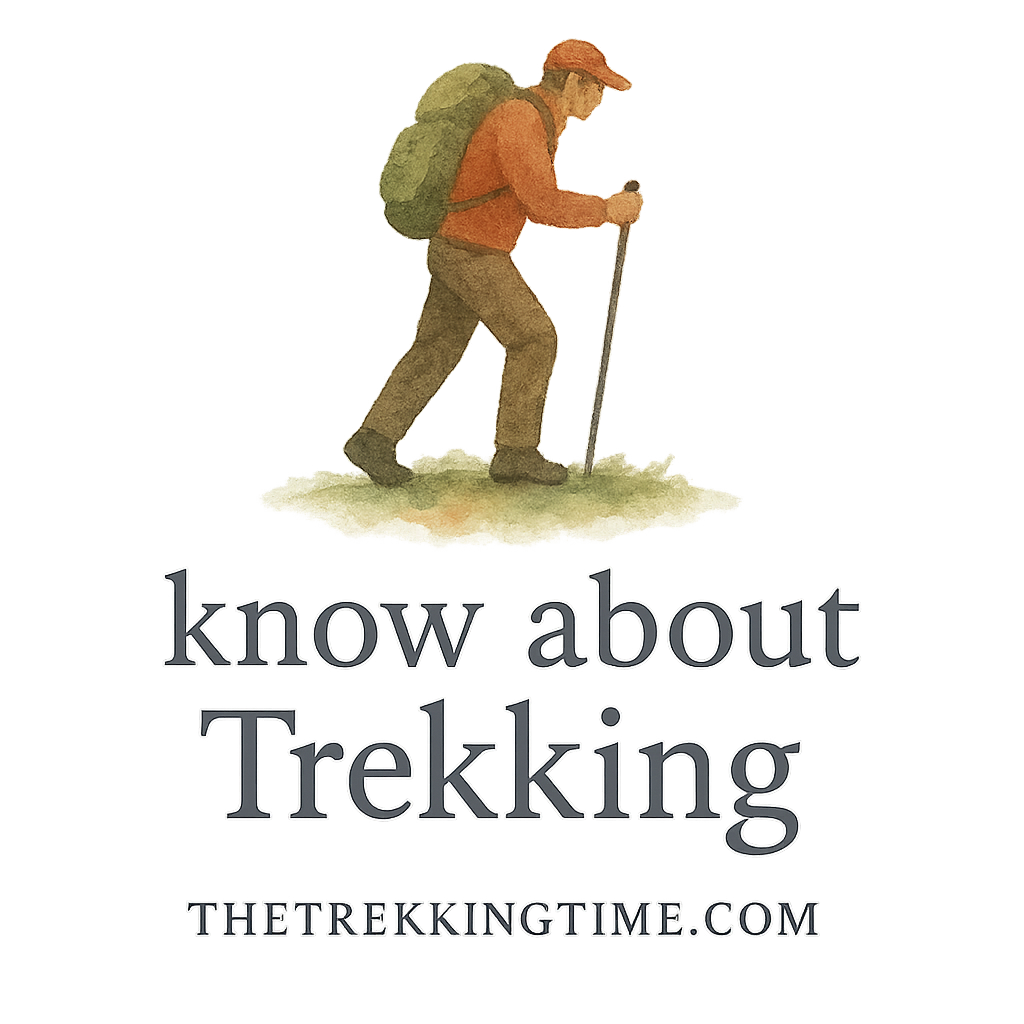Introduction
Planning your first or even your tenth trek? Awesome! But before you lace up those hiking boots and head into the wild, let’s talk about something serious—trekking mistakes. Whether you’re a total newbie or a seasoned hiker, it’s super easy to make avoidable errors that can turn your adventure into a nightmare.
So, let’s walk through the five most common trekking mistakes (yep, we’ve all made them!) and, more importantly, how to dodge them like a pro.
Mistake #1: Poor Physical Preparation
Why Fitness Matters on the Trail
Imagine hitting a trail thinking it’s just a scenic walk… then halfway through, your legs are shaking, your lungs are screaming, and you regret every skipped leg day. Trekking isn’t a casual stroll—it’s a full-body workout that tests your endurance, balance, and willpower.
A lot of trekkers assume if they can handle a 5K on flat ground, they’re good to go. But altitude, rough terrain, and long durations add extra layers of challenge.
How to Train for Your Trek
Here’s the deal: train like you’re training for a mini-marathon. Include cardio, leg strength, flexibility, and balance exercises. Start at least 6–8 weeks before your trek.
- Go on practice hikes with a loaded backpack.
- Add stair climbs or incline treadmill walks.
- Don’t forget to stretch—those hammies will thank you.
Resource: Trekking Fitness Prep Guide
This guide will get you physically ready and mentally pumped to own the trail.
Mistake #2: Packing the Wrong Gear
Overpacking vs Underpacking
Another classic: packing everything and the kitchen sink—or forgetting essentials like a rain jacket or headlamp. Packing mistakes fall into two categories:
- Overpacking: You carry way too much, your back pays the price.
- Underpacking: You miss out on critical items like thermal layers, meds, or navigation tools.
Must-Have Trekking Essentials
Here’s a quick checklist:
- Sturdy backpack
- Layered clothing
- Water filtration system
- First aid kit
- Trekking poles
- Energy snacks
- Rain cover and waterproof gear
And don’t skimp on footwear. Blisters can end a hike faster than a flat tire.
Resource: Gear & Packing Checklist
This checklist keeps you from lugging dead weight or forgetting the essentials.
Mistake #3: Ignoring Trail Etiquette
Basic Trail Etiquette Rules You Should Know
Let’s be real—no one likes a loud, reckless trekker hogging the trail. Trekking etiquette isn’t just about being polite; it’s about safety, sustainability, and keeping nature wild.
- Yield to uphill trekkers.
- Don’t blast music—wear earbuds if needed.
- Pack out what you pack in (yep, even the gross stuff).
Respecting Nature and Fellow Trekkers
Think of trails like temples—respect is non-negotiable. Don’t disturb wildlife, stick to marked paths, and give others space.
Resource: Etiquette and Responsibility
This guide helps you become the kind of hiker everyone loves to meet on the trail.

Mistake #4: Not Preparing for the Weather
Underestimating Mountain Weather
Weather in the mountains changes faster than moods during a caffeine crash. One moment it’s sunny, the next you’re caught in a thunderstorm or snow shower.
Being unprepared can lead to hypothermia, dehydration, or worse.
How to Dress for Weather Changes
The magic word? Layers.
- Base layer: Moisture-wicking
- Middle layer: Insulating (fleece or down)
- Outer layer: Waterproof/windproof shell
Also, always pack a rain jacket, even if the sky looks clear.
Mistake #5: Disregarding Safety Measures
Risks of Solo Trekking
Solo trekking sounds romantic—and it can be—but it comes with added risks like getting lost, injury with no help, or wildlife encounters. If you do go solo, tell someone your route and ETA.
Must-Know Trekking Safety Tips
- Carry a map + compass (and know how to use them!)
- Bring a whistle and flashlight
- Use GPS as backup, not your primary navigation
- Stay hydrated and fueled
Resource: Trekking Safety Tips
Solid advice on everything from route planning to wildlife safety.
The Mental Side of Trekking
How Mental Preparation Prevents Mistakes
Fatigue makes fools of us all. When you’re mentally drained, your decision-making plummets. That’s when you forget to hydrate, take the wrong turn, or ignore warning signs.
Practice mindfulness, visualize your trek, and expect the unexpected.
The Link Between Wellness and Performance
Mental and physical health go hand in hand. A healthy mind keeps you focused, alert, and calm under pressure.
Resource: Mental Health & Wellness in Trekking
Explore how nature supports mental wellness and boosts trekking performance.
How to Choose the Right Trekking Route
Matching Trails to Your Skill Level
Choosing the wrong trail is like picking a boss level when you’re still learning the game. Don’t let ego choose your adventure.
- Beginner? Go for low-altitude treks.
- Intermediate? Try moderately challenging routes.
- Advanced? Welcome to the Himalayas!
Where to Find Trusted Trekking Destinations
Not sure where to go? Here’s a start:
Explore options tagged by difficulty, mountains, and Himalayas.
Conclusion
Trekking is more than just putting one foot in front of the other—it’s about preparation, awareness, and respect. By avoiding these common trekking mistakes, you’ll have a safer, more enjoyable, and way more rewarding journey.
So train smart, pack right, respect the trail, and embrace the great outdoors. Adventure is calling… just don’t forget your rain jacket!
FAQs
1. What are the most common trekking mistakes beginners make?
Overpacking, poor fitness, ignoring safety, and choosing difficult trails are the big ones. Preparation is key!
2. Can I go trekking if I’m not in top physical shape?
Yes, start with beginner-friendly treks and follow a fitness prep plan to build stamina.
3. How do I choose a suitable trekking destination?
Check out trekking destinations based on your skill level and preferences.
4. Why is trail etiquette important?
It keeps everyone safe and ensures nature stays pristine. Learn the rules before heading out.
5. What gear do I really need for a multi-day trek?
Start with this checklist—it covers all the basics without overloading you.
6. Is solo trekking safe?
Only if you’re experienced, equipped, and inform someone of your plans. Otherwise, join a group.
7. How can trekking improve mental health?
Spending time outdoors boosts serotonin and reduces stress. Learn more in our wellness section.


